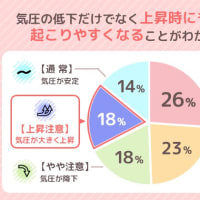James Crowe, director of the Vanderbilt Vaccine Center at the Vanderbilt University Medical Center, leads one of the four P3 teams. He spoke with IEEE Spectrum from Italy, where he and his wife are currently traveling—and currently recovering from a serious illness. “We both got pretty sick,” Crowe says, “we’re pretty sure we already had the coronavirus.” For his wife, he says, it was the worst illness she’s had in three decades. They’re trying to get tested for the virus. ヴァンダービルト大学医療センターのヴァンダービルトワクチンセンターのディレクターであるジェームスクロウは、4つのP3チームの1つを率いています。 彼は、彼と彼の妻が現在旅行中であり、現在深刻な病気から回復しているイタリアのIEEE Spectrumと話をしました。 「私たち二人ともかなり病気になりました」とCrowe氏は言います。「コロナウイルスをすでに持っていたと確信しています。」 彼の妻にとって、それは彼女が30年で経験した最悪の病気だったと彼は言います。 彼らはウイルスの検査を受けようとしています。
Ironically, Crowe is quite likely harboring the raw material that his team and others need to do their work. The DAPRA approach called for employing antibodies, the proteins that our bodies naturally use to fight infectious diseases, which remain in our bodies after an infection.
皮肉なことに、クロウは彼のチームや他の人が仕事をするために必要な原材料を持っている可能性が非常に高いです。 DAPRAアプローチでは、抗体を使用する必要がありました。抗体は、感染後も体内に残る感染症と戦うために自然に使用されるタンパク質です。
In the P3 program, the 60-day clock begins when a blood sample is taken from a person who has fully recovered from the disease of interest. Then the researchers screen that sample to find all the protective antibodies the person’s body has made to fight off the virus or bacteria. They use modeling and bioinformatics to choose the antibody that seems most effective at neutralizing the pathogen, and then determine the genetic sequence that codes for the creation of that particular antibody. That snippet of genetic code can then be manufactured quickly and at scale, and injected into people.
P3プログラムでは、対象の疾患から完全に回復した人から血液サンプルが採取されると、60日間のクロックが開始されます。 次に、研究者はそのサンプルをスクリーニングして、人の体がウイルスや細菌を撃退するために作ったすべての保護抗体を見つけます。 彼らはモデリングとバイオインフォマティクスを使用して、病原体の中和に最も効果があると思われる抗体を選択し、その特定の抗体の作成をコードする遺伝子配列を決定します。 その後、遺伝コードのスニペットを迅速かつ大規模に製造し、人々に注入することができます。
Jenkins says this approach is much faster than manufacturing the antibodies themselves. Once the genetic snippets are delivered by an injection, “your body becomes the bioreactor” that creates the antibodies, she says. The P3 program’s goal is to have protective levels of the antibodies circulating within 6 to 24 hours.
ジェンキンスは、このアプローチは抗体自体を製造するよりもはるかに速いと言います。 遺伝子断片が注射によって送達されると、「あなたの体がバイオリアクターになります」と抗体が作られます、と彼女は言います。 P3プログラムの目標は、抗体の保護レベルを6〜24時間以内に循環させることです。
DARPA calls this a “firebreak” technology, because it can provide immediate immunity to medical personnel, first responders, and other vulnerable people. However, it wouldn’t create the permanent protection that vaccines provide. (Vaccines work by presenting the body with a safe form of the pathogen, thus giving the body a low-stakes opportunity to learn how to respond, which it remembers on future exposures.) DARPAは、これを「防火」技術と呼びます。これは、医療従事者、救急隊、およびその他の脆弱な人々に即時の免疫を提供できるためです。 ただし、ワクチンが提供する永続的な保護は作成されません。 (ワクチンは、体に安全な病原体を提示することで機能します。したがって、体は反応の仕方を学ぶための低ステークの機会を与え、将来の暴露で記憶します。)
Robert Carnahan, who works with Crowe at the Vanderbilt Vaccine Center, explains that their method offers only temporary protection because the snippets of genetic code are messenger RNA, molecules that carry instructions for protein production. When the team’s specially designed mRNA is injected into the body, it’s taken up by cells (likely those in the liver) that churn out the needed antibodies. But eventually that RNA degrades, as do the antibodies that circulate through the blood stream.















※コメント投稿者のブログIDはブログ作成者のみに通知されます